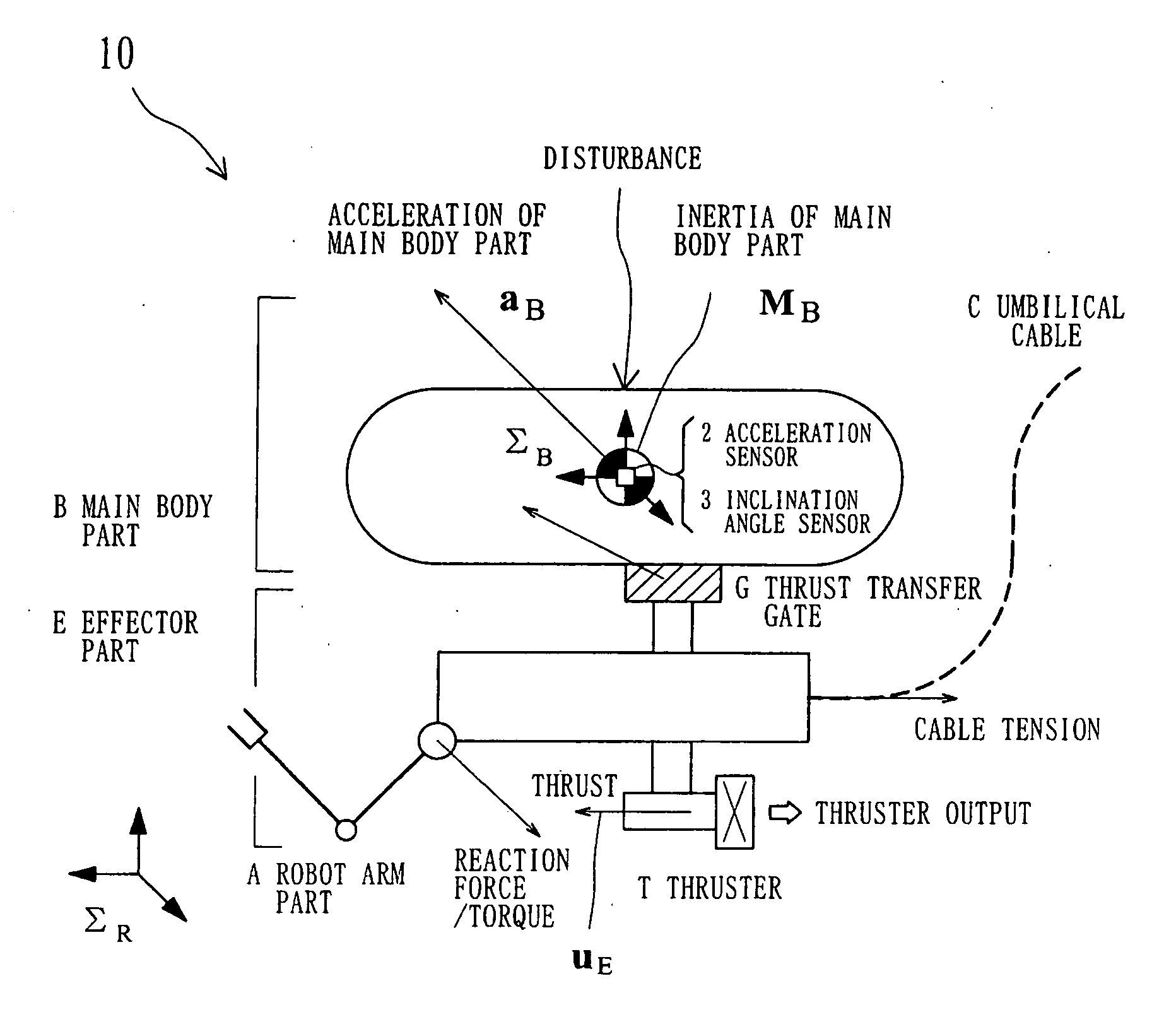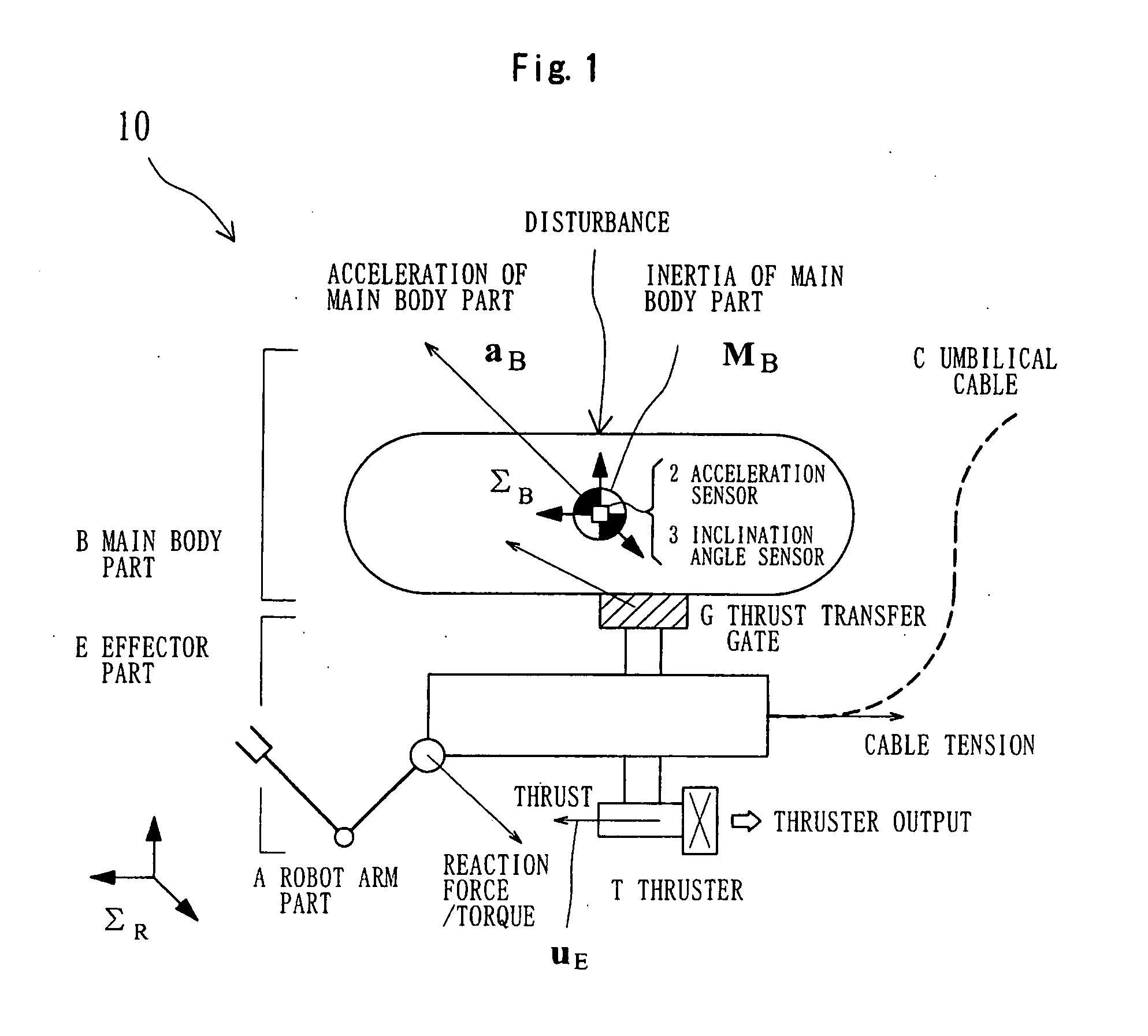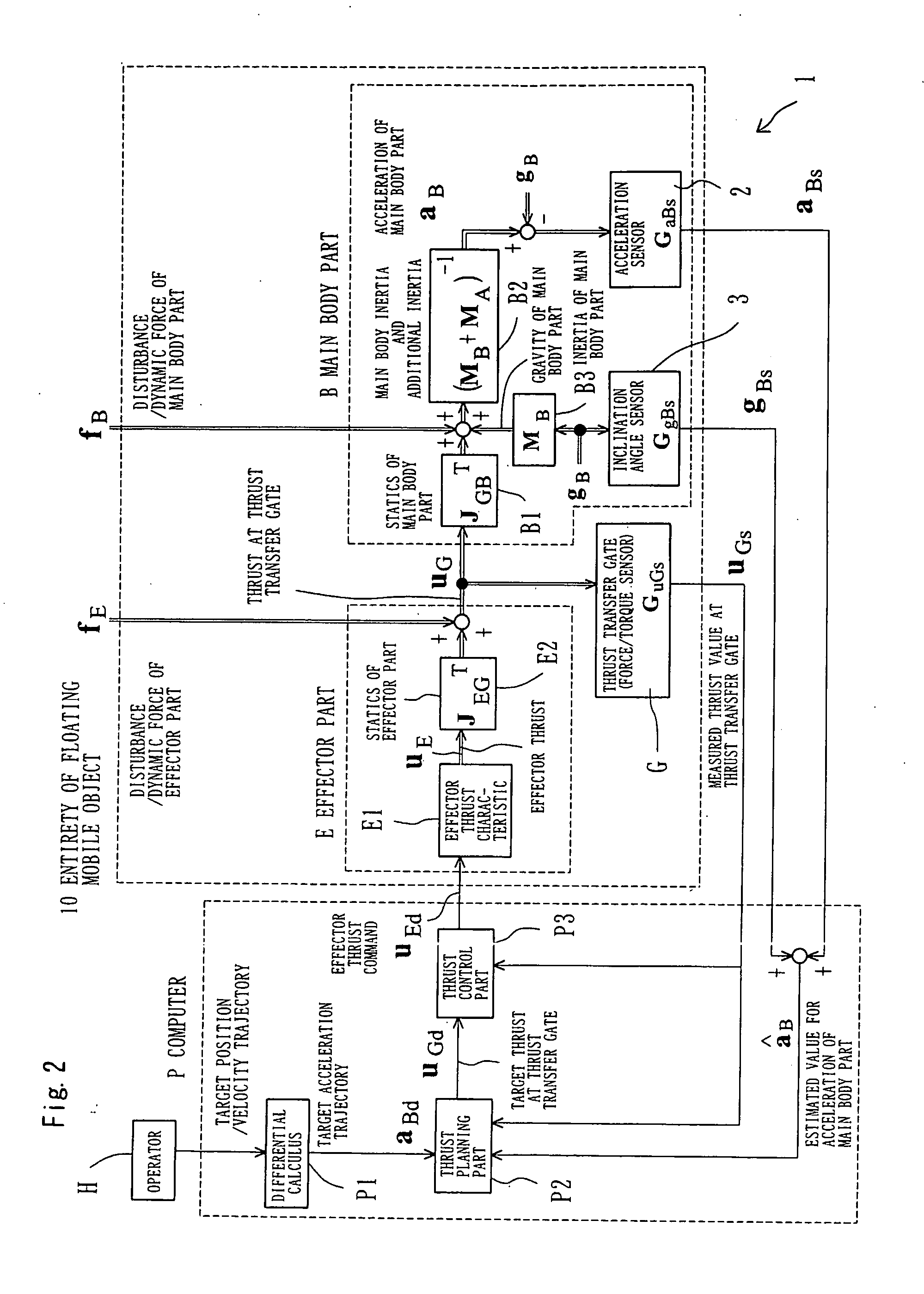Control system of floating mobile body
a control system and floating technology, applied in the direction of electric programme control, program control, instruments, etc., can solve the problem of low response speed to disturbances, adverse effects on control performance, and so on, and achieve the effect of suppressing nonlinearity of effector dynamic characteristics, preventing adverse effects on control performance, and not increasing the influence of sensing delay
- Summary
- Abstract
- Description
- Claims
- Application Information
AI Technical Summary
Benefits of technology
Problems solved by technology
Method used
Image
Examples
first embodiment
[0137] Hereinafter, an embodiment of the present invention and the action thereof will be described with reference to FIGS. 1 through 7 in relation to an underwater robot, which typifies a target for which the present invention is carried out. The underwater robot is nothing less than a floating mobile object for floating in three-dimensional space, and in the case of applying a control system of the present invention to the underwater robot, it is necessary to compensate for influence of a gravitational acceleration, therefore it is required to provide inclination angle measurement means capable of measuring an inclination of a main body part as defined by the invention according to (7) above. The same can be said of the invention according to (5) above to which the notion of a virtual thrust transfer gate system is applied, and in the case of applying a control system of the present invention, which employs the notion of the virtual thrust transfer gate system, to a floating mobil...
second embodiment
[0245] Described next is an embodiment of a floating mobile object acceleration sensing system of the present invention. As in the first embodiment, the present embodiment is described in relation to an underwater robot as an application target. Note that the underwater robot is nothing less than a floating mobile object for floating in three-dimensional space, and in the case of applying an acceleration sensing system of the present invention to the underwater robot, it is necessary to compensate for influence of a gravitational acceleration as in the first embodiment, therefore it is required to provide inclination angle measurement means capable of measuring an inclination of a main body part.
[0246] In the present embodiment, a thrust transfer gate is used for estimating an acceleration of the main body part. The acceleration sensing system according to the present embodiment is configured as shown in FIGS. 3 and 7. FIG. 3 is a schematic diagram of a floating mobile object, and ...
example 1
[0262] As described in the above first embodiment section, the floating mobile object control system of the present invention performs thrust control, and therefore, to be strict, an acceleration trajectory, rather than a position / velocity trajectory, is realized. Here, it is not possible to avoid influence of drift caused by integration error in acceleration, and therefore the motion on which the present invention solely exhibits a remarkable effect is that in a relatively high frequency range. As for low-frequency slow motion, it is necessary to additionally use a conventional control technique for feeding back a position / velocity, but in such a case also, it is possible to improve precision compared to the case of using the conventional technique alone.
[0263] Hereinbelow, an example of the present invention is described in relation to a control system employing conventional position / velocity feedback control in addition to each instance of the floating mobile object control syst...
PUM
 Login to View More
Login to View More Abstract
Description
Claims
Application Information
 Login to View More
Login to View More - R&D
- Intellectual Property
- Life Sciences
- Materials
- Tech Scout
- Unparalleled Data Quality
- Higher Quality Content
- 60% Fewer Hallucinations
Browse by: Latest US Patents, China's latest patents, Technical Efficacy Thesaurus, Application Domain, Technology Topic, Popular Technical Reports.
© 2025 PatSnap. All rights reserved.Legal|Privacy policy|Modern Slavery Act Transparency Statement|Sitemap|About US| Contact US: help@patsnap.com



